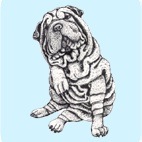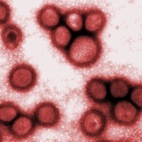Plan of Action for Amyloidosis
This article by Dr. Vidt presents a plan to monitor Shar-Pei with the goal of uncovering renal amyloidosis as early as possible and then instituting appropriate dietary and medical intervention. It does contain some technical terms which your veterinarian may be able to simplify for you. The author urges you to discuss this article with veterinarian and then both of you can work together in dealing with this troubling disease. Renal amyloidosis has hit the Shar-Pei fancy in recent years and left many of us feeling helpless as we watch young Shar-Pei sicken and die before our very eyes. We...




